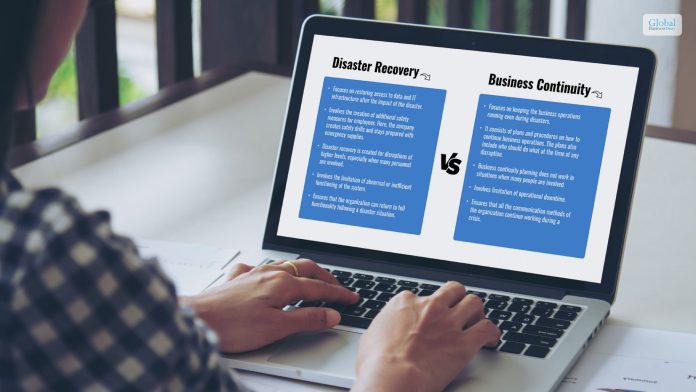What Is Risk Management? – Find Out How To Manage Risks in Business

What is risk management? – Simply put, it is the process by which businesses identify, assess, and control the various risks that threaten the growth, capital, and earnings of the organization. The risks for the organization can come from a variety of sources, both internal and external. These can be financial problems, legal problems, management errors, accidents, tech issues, economic problems, disasters, and many more.
In this article, you will learn about risk management in general and will get a good understanding of its essentiality in business. Furthermore, you will also learn the importance of risk management and how it can shape a business. Finally, we will share with you some of the best practices of risk management, with the help of which you can ensure a proper risk management system in place.
What Is Risk Management?
According to IBM.com,
“Risk management is the process of identifying, assessing and controlling financial, legal, strategic and security risks to an organization’s capital and earnings. These threats, or risks, could stem from a wide variety of sources, including financial uncertainty, legal liabilities, strategic management errors, accidents, and natural disasters.”
Risk management is important for situations when an unforeseen event (internal or external) pushes the organization into a threatening situation. It can also be an economic situation where an unexpected surprise in the market can heavily impact your business. Hence, having a risk management framework for your business is really essential.
The risk management framework will help you mitigate the risks in a better manner. Even if the risk affects your business, the risk management system will enable you to deal with that risk better.
External risks are out of your control, and you cannot do a lot to receive the impact of the risks. However, you can do many things to stop and mitigate the internal risks for your business. You will need to anticipate and prepare for the risks, despite the size of the business or the level of impact of the risk in the business.
Read More: Intrapreneurship – Definition, Importance, Duties, And Responsibilities
Why Is Risk Management Important?

According to Investopedia,
“Risk management has always been an important tool in running any business, particularly when a market experiences a downturn. In any economic environment, an unexpected surprise can destroy your business in one fell swoop if you don’t have the right risk management strategies in place to prevent, or at least mitigate, the damage from that risk.”
There are many risks that have enough potential to destroy the business and its operations. Hence, as a manager or CEO of the organization, you will need to identify what are the risks that pose threats to the operations of your business.
It does not matter whether the business is a startup or an established one. Risks can impact the business a lot. Even if a risk starts impacting a business, a business that is well-prepared can minimize the impact of the risk on the business’s earnings. With the impact of the risk, the business can also lose a lot of time, productivity, and even customers.
Hence, the identification of the risks of the business should be a key part of the business’s strategy and planning. You can identify risks in a number of ways once you implement a proper risk management system in the organization. What strategies you will employ to identify those risks should rely on the specific business activities of the company.
What Are The Best Ways To Manage Risks?

Having a proper risk management system in place is one of the major necessities. However, people still have their own biases.
According to Harvard Business Review,
“Multiple studies have found that people overestimate their ability to influence events that, in fact, are heavily determined by chance. We tend to be overconfident about the accuracy of our forecasts and risk assessments and far too narrow in our assessment of the range of outcomes that may occur.”
Here are the steps that you will need to take to ensure that you have a proper risk management system in place:
1. Risk Prioritization
If you have multiple risks, prioritizing the top ones will help you to deal with them as per their impact and possibility of impact.
2. Having A Business Insurance
Once you purchase insurance, you are transferring the risks of the company to insurance companies. Furthermore, you are not paying a lot of costs.
3. Becoming An LLC
If you do not want to be personally liable for the debts of the company, change your company’s structure to a Limited Liability Company (LLC) or a Corporation.
4. Quality Assurance
Quality assurance of products and services will help your business in increasing its reputation. Ensure to test them before customers purchase them. This will allow you to make all the necessary adjustments beforehand. Also, ensure that your testing methods are foolproof.
5. Get Away From High-Risk Customers
Implement a policy in your organization that the company will not entertain customers with poor credit. Even if the company deals with them, the customer must pay ahead of time. This shall lower the complications for the business in the long run.
6. Growth Control
Training your employees is of the highest importance here. To sell your products and services, if you set big goals for your employees, they shall be tempted to take uncalculated risks. This can make things go wrong and damage your company’s reputation.
7. Risk Management Team
Apart from paying an outside company to manage the risks in your business, consider having a risk management team of your own. To do this, you can appoint some of your current and experienced employees to work in risk management.
Read More: Entrepreneur : Who Coined The Term ‘Entrepreneur’?
Final Thought
What is risk management? – Risk management basically creates insurance for the company from within and is really important to ensure the success of the organization. If you want to implement a system within your company, consider following the aforementioned steps.
To shape a better strategy for your business, you will need to get a better idea of the business and the industry by diving deeper. Do you have any more recommendations regarding better risk management strategies? In that case, consider sharing your thoughts and views with us in the comments section below.
Read Also:













